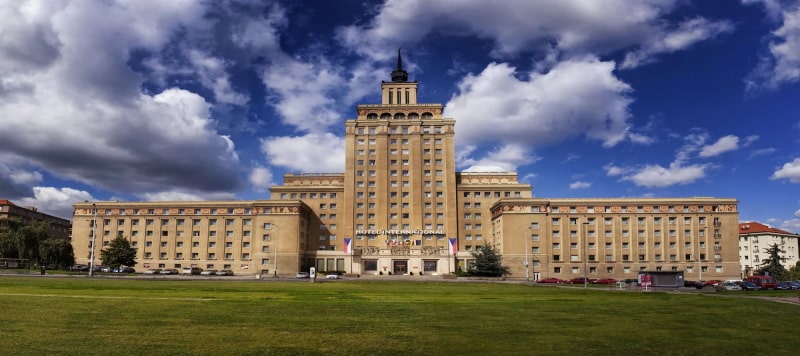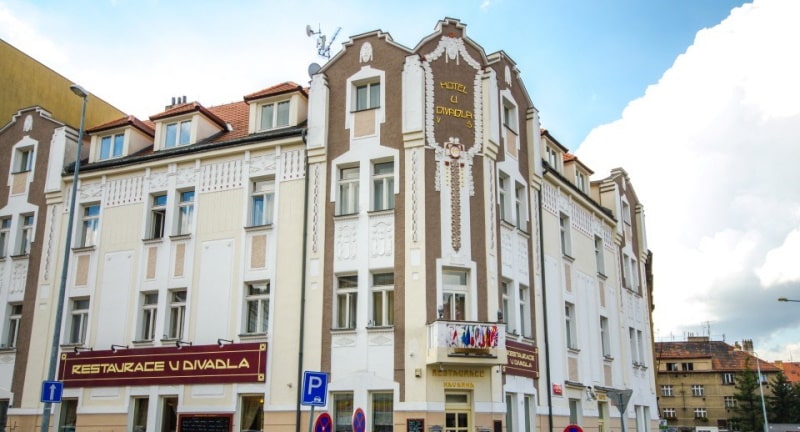
You can search for holidays
Prague Holidays
Prague attracts scores of tourists with its picturesque beauty and rich history spanning over a millennium. Dating back to 870 AD, this historic city has survived overthrows, invasions, fires and floods over the years and still came above everything with resilience. Today, its churches, hilltop castles, and statue-lined bridges paint a picture of an urban fairy tale that charms even the most jaded traveller, with scenic river cruises to admire it all.
Prague is one of the best-preserved centres in Europe with narrow alleys of the Old Town leading to spectacular squares and historical buildings just waiting to be explored. Anywhere you look, you’ll find fine examples of baroque, renaissance, and gothic architecture. In fact, the city has been nicknamed the "city of a thousand spires" because of majestic views of beautiful domed churches and soaring old towers.
Map of Prague

Grand Hotel International Prague
Koulova 1501/15, 160 45 Praha 6, Czechia

Hotel U Divadla
U Staré pošty 247/6, 147 00 Praha 4-Braník, Czechia
Local Information & Travel Tips
Getting Around Prague
Prague has an excellent public transport system, including trams, buses, and the metro. Tram 22 is one of the best routes for sightseeing, passing by landmarks such as Prague Castle and the National Theatre. The city’s old town areas are compact and pedestrian-friendly, so walking is one of the best ways to explore.
Local Experiences
Czech beer - Prague is famous for its beer culture, with popular brands like Pilsner Urquell and Budweiser Budvar. Try a local pivovar (brewery) like U Fleku or U Medvídku for an authentic experience.
Food - traditional Czech cuisine is hearty. Don’t miss dishes like svícková (marinated beef in creamy sauce with dumplings), vepro knedlo zelo (roast pork with dumplings and sauerkraut), and trdelník - a chimney cake that although is not originally Czech, (it comes from Hungary and Slovakia), has become a popular street food in Prague, especially among tourists. It’s a sweet pastry made from dough wrapped around a stick, grilled, and coated with sugar and cinnamon. Some variations come filled with ice cream, chocolate, or whipped cream.
Safety
Prague is generally considered a safe city for both tourists and residents, but like any major destination, it has its own set of safety concerns. Pickpocketing is the most common crime, especially in tourist-heavy areas like Old Town Square, Charles Bridge, Wenceslas Square, and on public transport. Be mindful of your belongings, especially in crowded areas.
Things to Do and See in Prague
Old Town Square Prague - the Old Town Square, or Staromestské námestí, is the heart of the city's historic district and one of the most picturesque squares in Europe, surrounded by stunning Gothic, Baroque, and Romanesque architecture, and the Old Town Hall, with the famous Astronomical Clock Prague. Beyond its architectural splendour, the Old Town Square is a lively gathering place with street performers, market stalls, and horse-drawn carriages adding to its charm
Prague Castle - this sprawling complex is the largest ancient castle in the world and includes the stunning St. Vitus Cathedral, the Old Royal Palace, and the picturesque Golden Lane with tiny, colourful houses. The castle also offers panoramic views of the city.
Charles Bridge Prague - this historic stone bridge, built in the 14th century, spans the Vltava River and connects Old Town with Lesser Town. It’s adorned with 30 statues of saints, with the most famous being the statue of St. John of Nepomuk.
Wenceslas Square Prague - a bustling boulevard at the heart of New Town, Wenceslas Square has been the site of many important historical events, including political protests and celebrations. It’s also home to the National Museum at one end and is lined with shops, restaurants, and bars.
Jewish Quarter Prague – Prague's Jewish Quarter is home to the Old Jewish Cemetery, Spanish Synagogue, Pinkas Synagogue, and the Jewish Museum. The Old Jewish Cemetery is particularly fascinating, with thousands of gravestones crowded into a small space.
Petrin Hill and Lookout Tower – a peaceful park area west of the Vltava River, Petrin Hill offers lovely gardens and walking paths. The Petrin Lookout Tower, which resembles a mini Eiffel Tower, provides panoramic views of the city.
Prague National Museum - located at the top of Wenceslas Square, the National Museum has an impressive neo-Renaissance facade and houses extensive collections of natural history, art, and historical artifacts. the museum is not only a treasure trove of Czech culture and history, but the building itself is an architectural masterpiece.
Dancing House Prague - an architectural gem designed by Frank Gehry and Vlado Milunic, the Dancing House stands out for its unique, modern style amid the traditional Baroque and Gothic structures of Prague. The building resembles a pair of dancers, often referred to as Fred and Ginger.
Strahov Monastery Library - the Strahov Monastery Prague is known for its magnificent library, which houses thousands of historical texts. The Theological Hall and Philosophical Hall are among the most beautiful libraries in the world, adorned with frescoes and stunning woodwork.
Letná Park Prague - a large park on a hill overlooking the city, Letná offers a peaceful escape with some of the best views of Prague's skyline and bridges. The Metronome, a giant kinetic sculpture, stands in the park, marking the spot where a statue of Stalin once stood.
Kampa Island Prague – located along the Vltava River, just below Charles Bridge, Kampa Island is home to the Kampa Museum, which features modern art, and the John Lennon Wall, a symbol of peace and freedom covered in colorful graffiti.
Prague Weather
Spring (March to May)
Spring is mild and pleasant, with temperatures gradually warming up from the cold of winter. Early spring (March) can still be chilly, with highs around 8–12°C, but by May, temperatures often reach 15–20°C. Flowers start blooming in the parks and gardens, making it an ideal time to explore Prague's outdoor attractions like Petrin Hill and Letná Park.
Summer (June to August)
Summers in Prague are warm, with average high temperatures ranging from 22–27°C. Occasionally, it can get hotter, with highs reaching over 30°C during heatwaves. June and July can see some thunderstorms, but these are usually brief. Summer is the peak tourist season, and the city is bustling with visitors. This is a great time for walking tours, boat rides on the Vltava River, and enjoying outdoor events and festivals.
Autumn (September to November)
Autumn begins with mild, pleasant weather in September, with temperatures around 15–20°C. By November, however, it gets much cooler, with temperatures dropping to 5–10°C. There can be more rain in autumn, especially in October and November. Autumn is one of the most beautiful times to visit Prague as the leaves turn golden and the city’s parks and gardens are vibrant with autumnal colours. September and October are great months to avoid the summer crowds, while still enjoying pleasant weather.
Winter (December to February)
Winters in Prague are cold, with temperatures often hovering around 0°C or dipping below, especially in January and February, when they can go as low as -5°C to -10°C at night. Snow is common but not guaranteed. Christmas markets and festive lights make Prague a special place to visit in December. It’s the perfect time to warm up in cosy cafés with hot chocolate or mulled wine (svarák). Winter is the off-season, so you’ll experience fewer crowds.
Looking for other holidays?
Copyright ©2025 Brightsun Travel. All rights reserved.


